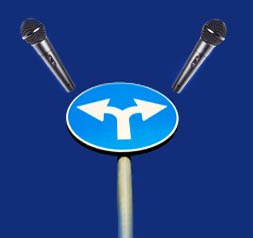If a church sound system has evolved along a familiar path, what started out as a pretty simple, small group “sound-on-a-stick” has gradually become more and more sophisticated.
Many have replaced that powered mixer with separate components and added a snake to allow for a mix position in the listening area. Words like “direct box,” “balanced,” “low impedance,” “crossover,” etc. have become part of the sound team’s vocabulary as they strive to provide today’s expected level of sound quality and production – for both the listeners and the performers.
In this article, we just might add some additional terms to your audio vocabulary as we discuss microphone splitters.
When To Split?
As your sound system expands, it will eventually be necessary to provide additional mixes from locations other than the main mix position. Although it’s possible to provide a separate monitor mix from the main console, a person located nearer to the performance area can hear what the performers hear, see their cues more easily, and just generally be able to provide a better monitor mix.
Or you may be called upon to provide a separate mix for recording or broadcasting your performances. That mix will be at its best if the person providing it is isolated from the confusion of hearing the live sound. In any event, you’ll most likely need to split your mic signals and feed more than one mixing console.
Impedance
Proper design of signal flow in an audio system dictates that low impedance outputs (mics) feed high impedance inputs (mixers). When a signal is split to be sent to more than one mixing console, the input impedances of those consoles provide additional paths for the electrical current. This actually increases the overall load presented to the mic signal and limits how many times it can be split without degrading tone or introducing distortion.
Microphones can usually be split to up to three, and in rare cases even four, destinations without the use of electronics. The number of splits that can be accomplished depends on the application, impedances present in the system, length of the cables and the quality of the components used in the splitter. This is called passive splitting – no power required. Active electronic splitters will most likely be required when splitting microphones to four or more consoles.
There are two types of passive splitters: parallel and transformer isolated.




















